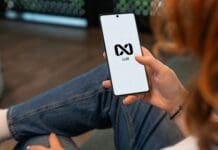This post is also available in:
 עברית (Hebrew)
עברית (Hebrew)
Biometric facial comparison technology is employed by the US Customs and Border Protection (CBP) at the pedestrian border crossings in Cross Border Xpress (CBX) and Tecate, CA. The technology is intended to enhance the identity verification process for lawful entry into the United States.
The biometric facial comparison process occurs only at a time and place where travelers are already required by law to verify their identity by presenting a travel document. When a traveler arrives at the pedestrian lanes, he or she will pause for a photo at the primary inspection point. A CBP officer will review and query the travel document, which will retrieve the traveler’s passport or visa photo from government holdings.
The new photo of the traveler will be compared to the photo previously collected. CBP says the facial comparison process only takes a few seconds and is over 97 percent accurate.
It is voluntary for U.S. citizens to have their photo taken. U.S. citizens who wish to opt out of the new biometric process may notify a CBP officer when approaching the primary inspection area.
These travelers will be required to present a valid travel document for inspection by a CBP officer and they will be processed consistent with existing requirements for admission into the United States.
What about privacy? CBP has employed strong technical security safeguards and has limited the amount of personally identifiable information used in the enhanced biometric process. New photos of U.S. citizens will be deleted within 12 hours. Photos of foreign nationals will be stored in a secure DHS system.
To date, more than 53 million travelers have participated in the biometric facial comparison process at air, land and sea ports of entry, according to hstoday.us.


























